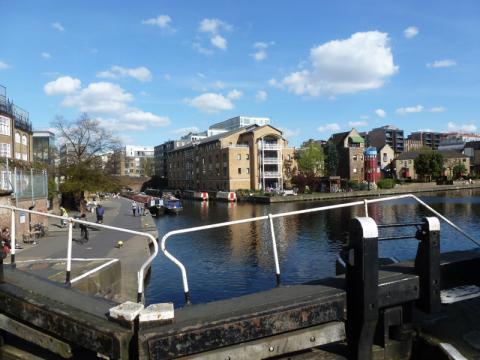CRT Licence Review report signals “significant” change for boaters
Findings from the first phase of the consultation for the Canal and River Trust’s 2017 licencing review have been released, in what CRT have called “the most significant review of licensing in a generation”
‘Continuous Cruisers’ have come under fire in a report recently released by CRT as part of a nationwide review of boat licencing rules.
The report, called ‘Licensing Futures – Stage 1’, was written by the arbitration organization Involve – hired by CRT – and logs the responses of boating and canal organizations contacted during the first phase of the three phase consultation.
Most respondents said that the growth in people living on their boats was not itself seen as a problem in itself, but animosity towards ‘Continuous Cruisers’ was clear, with busy towpath moorings in areas like London described by one respondent as “wall to wall estates”, while another suggested that “most” Continuous Cruisers “are actually trying very hard not to move”.
Owners of widebeams also came under fire in the report, with suggestions that they should pay more for their licence than equivalent length narrowboats.
CRT claim the review is needed because of the current “perception” that the current licencing system is “complex” and “unfair”, according to Ian Rogers, CRT’s Customer Service and Operations Director.
However, some respondents raised “suspicion” of the reasoning behind CRT’s drive to change a system that has existed unchanged for the last two decades. The National Bargee Traveller Association said recently that the current licencing system was “neither complex nor difficult to understand”.
The first phase was based on extensive telephone interviews with the heads of canal organisations, in which four key challenges were raised, many of which will be familiar to London boaters;
- An increasing number of residential boats, particularly in urban areas, with London labelled as a “no-go area for visiting boats”
- Increases in both the length and width of boats, with widebeams frequently mentioned as a problem
- Congestion and continuous cruising
- Owners without a business licence renting out their boat
Unsurprisingly, the solutions offered were diverse, contradictory and often sectarian, with a clear dichotomy between groups representing ‘Continuous Cruisers’ such as NBTA, and other more ambivalent groups such as the Inland Waterways Association (IWA) and the Residential Boat Owners Association.
Whilst feedback for the Involve first phase consultation report has been anonymized, a report by Canal Boat magazine found that organisations such as the RBOA were largely focused on new residential moorings and suggested ‘Continuous Cruisers’ licence fees be linked to cruising patterns, with the IWA going even further in suggesting that ‘Continuous Cruisers’ should face a 100 mile range, with a 300 mile minimum distance total.
On the other hand, NABO and the NBTA were largely happy with the status quo, with respondents raising concerns behind CRT’s motives for overhauling a system that is “neither complex nor difficult to understand”.
There are approximately 100 miles of CRT managed canal and river in the London region, which stretches from King’s Langley down to Brentford on the Grand Union Canal, across the Regents Canal to the Hertford Union, then down the river Lee/Limehouse Cut to Limehouse and up to the northern end of the River Lee and Stort.
The second phase of the consultation is already under way, with a series of in-depth workshops taking place with boaters across the country. The final stage will involve a consultation for all boat owners to give their views on the options developed during the two previous stages, and is due later in the year.
George Godson/LB News






